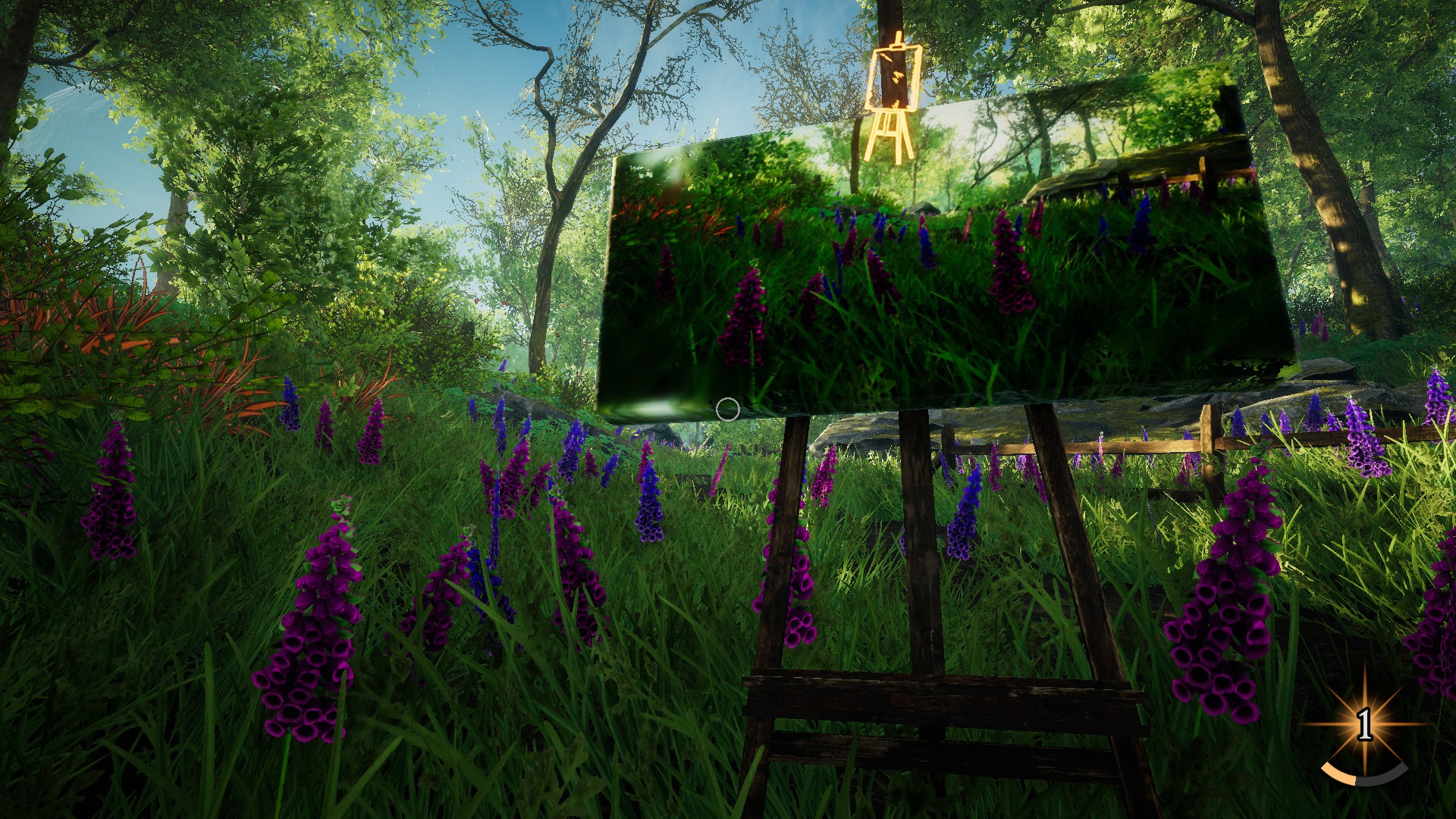Our Verdict
A charming traveling artist adventure which uses image capture in interesting ways.
PC Gamer's got your back
What is it? A relaxing first person open world art creation game
Expect to pay $25/£19.50
Developer Eastshade Studios
Publisher In-house
Reviewed on Windows 10, 16GB RAM, Intel Core i7-5820k, GeForce GTX 970
Multiplayer None
Link Official site
Do you know who I admire? Anika from Eastshade. Anika lives in a little hut between the port of Lyndow and the city of Nava in the game. She’s obsessed with owls. Can’t get enough of them. When she’s not sitting bolt upright in her hovel she’s tramping through the ferns making hooting noises.
I, on the other hand, am playing a travelling artist. I came to Eastshade to paint pictures in tribute to my mother via a type of in-game screenshotting. It’s this art focus which sets Eastshade apart from other games which muddle about in those Euro-flavoured high fantasy settings.

The game opens with your character being shipwrecked. You wake up in a cave just outside the tiny port of Lyndow and start to explore, quickly accumulating a to-do list, idly picking up sticks and flowers, and noting how picturesque everything is. You learn how to make canvases out of bits of wood and fabric under the guise of teaching a little kid in Lyndow how to do it.
Painting involves picking a canvas—either a fresh one or a used one you’re happy to paint over. Once you’ve picked your surface you compose the image. This is done by cropping the view you have onscreen using a rectangle guideline. Pressing E paints whatever’s in the rectangle, applying some effects so that what’s shown on an easel which appears in the world isn’t a straightforward screenshot, but takes on a painterly quality. Each painting costs inspiration, which you collect by visiting new areas or completing new tasks.
Games being pretty isn’t unusual, but Eastshade’s design is closer to that of a grand garden. The buildings feel more like follies than functional houses, the bridges come straight from arcadian paintings, and curated lines of sight are key.

Capturing specific objects, people or areas of Eastshade allows you to fulfil commissions or make progress in quests. The main purpose of the game is to collect four paintings which correspond to your mother’s memories of the place, but in trying to reach those locations you end up following little side stories—a religious conflict involving hallucinogenic tea, a neighbourly dispute over whether a guy who keeps getting jars stuck on his head is a good parent, a tiny detective quest involving a stolen book.
There’s an element of crafting here too, although it’s not particularly complex. You can use what you gather to brew teas which offer different effects, trade feathers for cash, or build a raft or a reed boat to cross the water. I found that as long as I remembered to pack my boat up when I’d finished using it, I only needed to craft one.

The only times I was really paying attention to my resources were when I needed to make money. Figuring out how to catch the largest kind of fish meant I could soon afford a coat and thus stay outside during the freezing night. Traipsing round, picking up feathers helped me pay the bridge toll and leave Lyndow.
Eastshade isn’t huge—I finished in about 10 hours—but it is charming. There are memorable characters: Anika and her owl obsession, the ship’s captain who hates you because you don’t understand how much she loved her boat, the night drummers. And the screenshot mechanic is enough of a point of difference that the fairly familiar story setup still feels fresh. You also see your own paintings on people’s walls as you turn in commissions.
The game crashed a lot so I’d advise saving frequently. Some of the tasks don’t flow smoothly (e.g. I spent a long time trying to make sealant for a raft, only to find out you get it from a character in Nava as part of a quest). I could also do with a few more map markers, and sometimes the painting interface didn’t register my clicks.
But even with these quibbles using image capture as part of the game is fascinating. Tying it to a finite resource and making you compose a shot before you paint means you make decisions about what to capture in a different way to normal screenshotting. As someone who also loved the film camera in Firewatch, I’d love to see more developers play in this space.
A charming traveling artist adventure which uses image capture in interesting ways.


